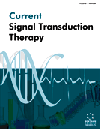
Full text loading...
We use cookies to track usage and preferences.I Understand
Peroxisome Proliferator-Activated Receptors (PPARs) are nuclear receptors involved in the regulation of glucose and lipid metabolism, making them potential targets for treating type 2 diabetes mellitus. 5-Benzylthiazolidine-2, 4-dione derivatives, organic compounds with a thiazolidine-2, 4-dione core and a benzyl moiety at the 5-position, have garnered attention for their diverse pharmacological activities, including anti-inflammatory, anti-cancer, anti-diabetic, anti-tubercular, and anti-viral properties.
This research aimed to identify 5-benzylthiazolidine-2,4-dione derivatives as synthetic PPAR-gamma agonists using computational methods, such as molecular docking and in silico ADMET analysis. Virtual screening generated potential molecules, and molecular docking studies using AutoDock Vina 1.5.6 were performed at the active site of the PPAR-gamma receptor (PDBID: 4PRG).
Nine hits were identified based on their binding affinities and were further evaluated using SwissADME for their ADME properties. These nine compounds demonstrated superior ADME profiles and bioavailability compared to the standard drug Rosiglitazone.
This study provides a comprehensive computational approach for discovering novel PPAR-gamma receptor agonists, potentially advancing experimental diabetes research.

Article metrics loading...

Full text loading...
References


Data & Media loading...

